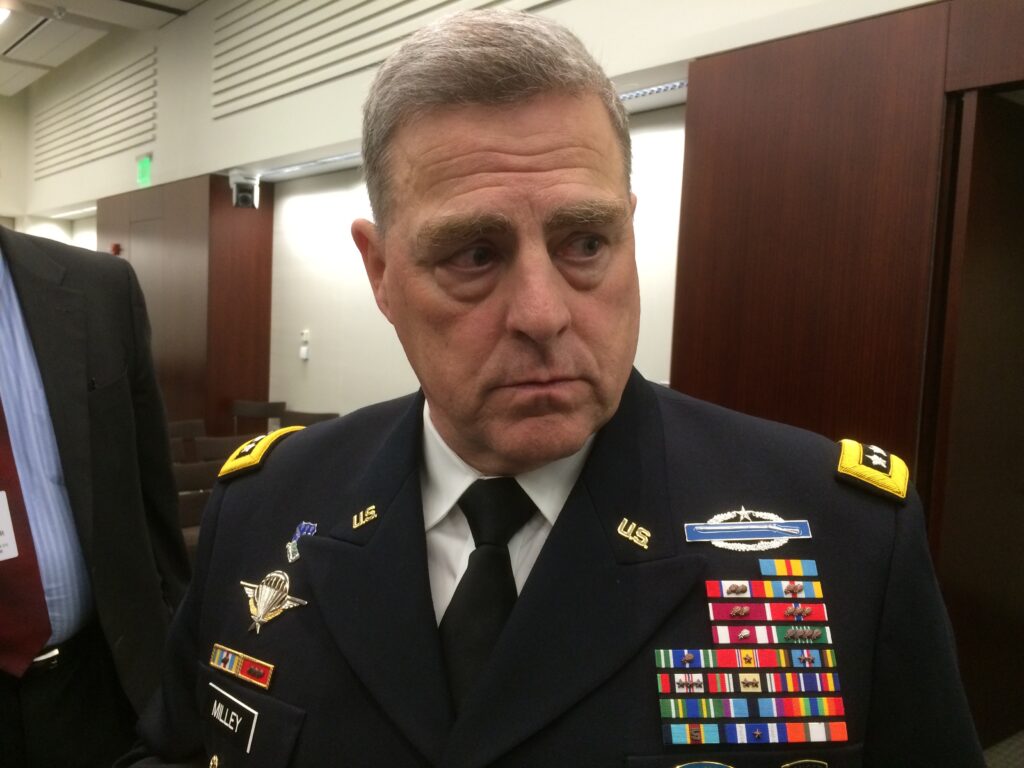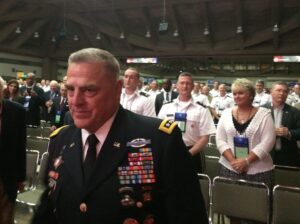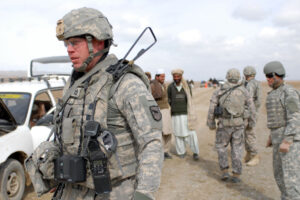Guard Cheers Army Chief Milley: Budget Civil War Seems Over
Posted on

Gen. Mark Milley
BALTIMORE: Army Chief of Staff Mark Milley owned the room here at the annual conference of the National Guard Association of the US, a powerful group once bitterly at odds with his predecessor, Ray Odierno. Two years after an Army plan to disband Guard Apache gunship battalions started a Guard revolt, one year after the newly installed Milley addressed a cautiously optimistic Guard Association, Saturday’s session clearly showed the once-endangered relationship has completely turned around. Amidst the high energy and goodwill, Apaches didn’t come up once.
 Instead, for over an hour, Milley — the first genuinely funny general to serve as Chief of Staff that I can remember — had the audience laughing and whooping. He even got a laugh when he admitted one of his major initiatives, to fund more training for the Guard, had run afoul of the byzantine budgeting process.
Instead, for over an hour, Milley — the first genuinely funny general to serve as Chief of Staff that I can remember — had the audience laughing and whooping. He even got a laugh when he admitted one of his major initiatives, to fund more training for the Guard, had run afoul of the byzantine budgeting process.
“Increasing training days has proven to come off my lips pretty easy but ran into all kinds of problems,” Milley said ruefully to laughter from the hall. “I’m going to do it, though… We’ve put in the POM (five-year Program Objective Memorandum), into the budget, requests for additional monies to increase the amount of training days. It’s a big deal, it’s important, it is a challenge, but I do think we’ll be able to get there.” (The Army’s also trying to get funding for the Guard Apaches).
The atmosphere was so warm and relaxed that Milley could tease state delegations about how loudly they cheered when he mentioned their heroes and deployed units. “Whooo, gotta work on you,” he needled a too-quiet Idaho. “You’re as loud as Mississippi, South Dakota. Let’s hear that again.” The pep-rally excitement contrasted with the respectful but restrained reception for the previous speaker, Air Force Secretary Deborah Lee James.

Gen. Mark Milley met an enthusiastic welcome from the National Guard Association of the US (NGAUS).
Even the Q&A sessions were strikingly different. Sec. James got respectful, impersonal queries about general policy issues — personnel management, base closure, the war on drugs — and she responded with general policy statements. (Of course, the Air Force active-Guard relationship has traditionally been closer and friendlier because of the day-to-day integration of the two forces — making Milley’s reception all the more remarkable). Gen. Milley’s questioners were more likely to ask him for help with specific problems affecting their unit — approaching the four-star general with clear confidence that he would help them — and Milley responded by demanding details, taking notes, giving out his email address, and promising action.
“Sounds screwed up to me,” he harrumphed, to laughter, after the Colorado Guard’s chief of staff explained the bureaucratic obstacles to designating a needed training area. “I’m gonna dig into it.” At the end of the hour, Milley indicated the director of the Army Guard — whom he’d put on the spot to answer questions multiple times — and said, counting, “I’ve got…1, 2, 3, 4, 5, 6, 7 taskers for [Lt. Gen. Tim] Kadavy.”

A National Guard AH-64 Apache lands on a Navy ship — a rare skill in the Army. But the Pentagon’s budget plans would move all Guard Apaches to active-duty units.
Milley finally left the room after many handshakes and at least two people begging to take selfies with him. As I slipped into his entourage and followed him out, I observed to him that the hall seemed to like him. Milley snorted with laughter. So, I asked, how did we get to the point where you got such a positive response, with nary a mention of Apaches?
Milley instantly turned serious. “The National Guard’s a critical component of the Total Army, so I made a commitment last year to try to be inclusive,” he told me. “Over half of the total Army is in the Guard and Reserve. As the Chief of Staff of the whole Army, I have made a concerted effort to make sure that I reach out, include, and try to improve readiness of the Guard. Because of those efforts, I think we’ve had some success over the past year — but we’re not done yet. We have a long way to go.”
“The Commission on the Future of the Army did a lot of good work,” Milley went on, referring to the congressionally chartered panel whose proposals — including a compromise on the Guard Apaches which the Army has endorsed — have formed the nucleus of a much-needed consensus and helped to bridge the bitter regular-Guard divide.

South Dakota National Guard soldiers on duty in Afghanistan.
“We’ve taken a lot of their recommendations to heart, we’re working them, (and) we’re working them as one team,” Milley said, “so we have the Guard representatives, TAG [state commander] representatives, we have Guard division commanders, Guard brigade commanders, all working with our Regular Army folks and the Army staff. So it’s been a total team effort, and because of the level of teamwork that we’ve been doing over the past year, I think some of what you heard earlier has probably dissipated somewhat.”
The normally blunt Milley is being modest here. At least in the hall here in Baltimore, the tension seems to have “dissipated” entirely. That’s a remarkable achievement for a service that, just three years ago, seemed hell-bent on restarting the internecine budget wars between the active and Guard of the 1990s. Budget remains tight and tensions could flare up again, of course. But for now, the combination of Milley’s leadership, congressional pressure, and the widely respected work of the commission — plus 15 years of regulars, reservists, and Guard soldiers fighting side by side — seems to have stopped the slide towards conflict.
Subscribe to our newsletter
Promotions, new products and sales. Directly to your inbox.
